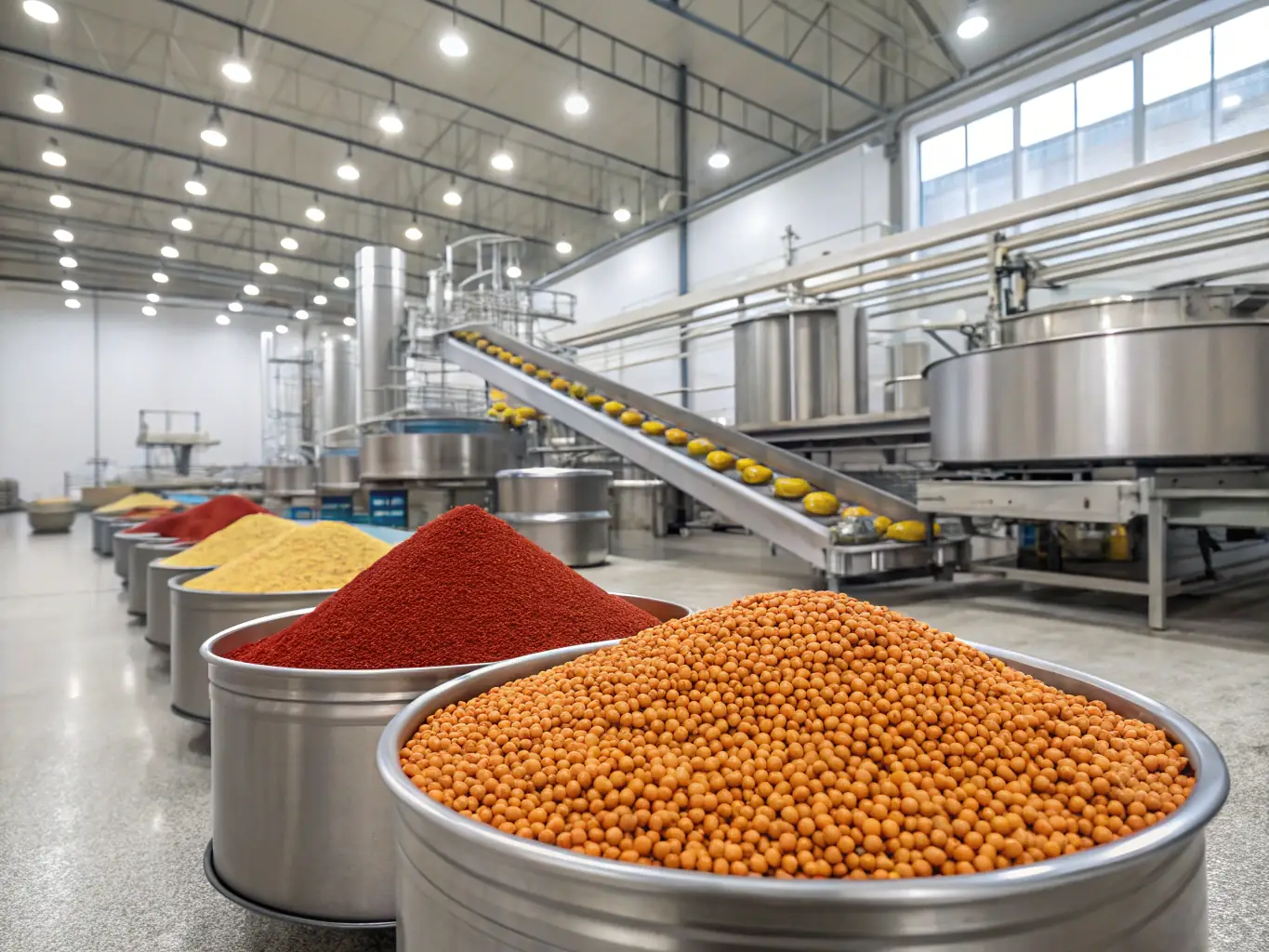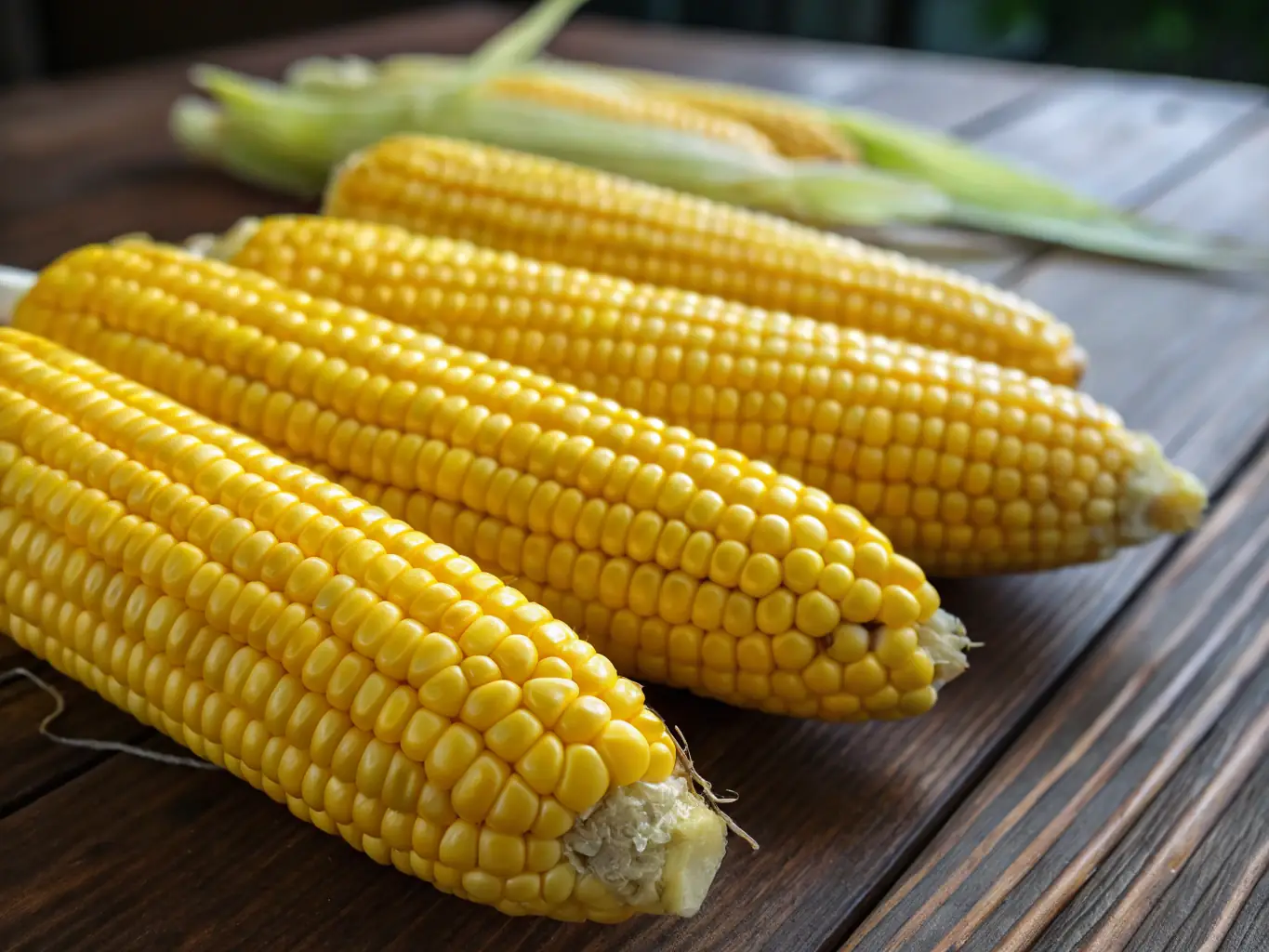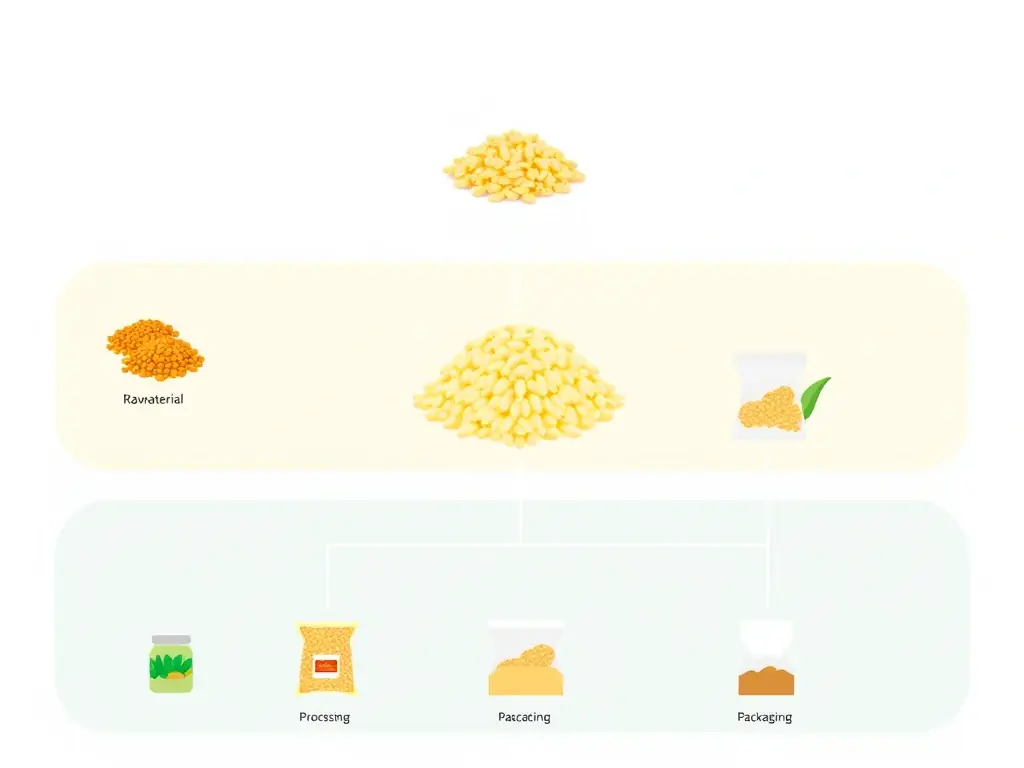Unlock Your Corn Poha Venture
Table of Contents
Best Corn Poha Project Report: Detailed Manufacturing Process and Business Plan
Looking to start a Corn Poha manufacturing business? This article covers everything you need to know, from market potential to detailed business plans, including a comprehensive corn poha project report. Find out how to succeed in the growing Corn Poha market.
Entrepreneurs can also prepare project report documents tailored to their specific business needs, including market analysis, financial forecasting, and project planning.
Key Takeaways
Corn Poha is a nutritious, gluten-free alternative to traditional Rice Poha, making it increasingly popular in the health-conscious market.
The increasing demand for maize-based products is creating new opportunities for entrepreneurs in the Corn Poha sector.
The manufacturing process of Corn Poha involves key steps including cleaning, soaking, roasting, flaking, drying, and packaging, ensuring quality and longevity of the product.
Government schemes and subsidies, such as PMEGP and Mudra, provide essential support for entrepreneurs in Corn Poha manufacturing, facilitating business establishment and growth.
Understanding Corn Poha and Its Market Potential

What is Corn Poha? Corn Poha, also known as Makki Poha, is a nutritious breakfast alternative made from flattened corn, offering a unique twist compared to the traditional rice flakes poha.
Nutritional Profile It provides a rich source of carbohydrates and fiber, serving as an energy-rich meal option that caters to the growing demand for healthy, gluten-free foods, unlike puffed rice.
Versatility in Food Industry Corn Poha is increasingly used in various culinary applications, including breakfast dishes, snacks, and as an ingredient in elaborate recipes, reflecting its versatility and popularity.
Market Demand The rising consumer interest in nutritious and convenient food options is driving significant market potential for Corn Poha.
Conducting a market survey is essential for understanding consumer preferences and assessing the feasibility of launching a Corn Poha business.
Entrepreneurial Resource Comprehensive project reports and eBooks are available for instant download, offering detailed insights into manufacturing processes, market analysis, and business planning to empower entrepreneurs.
What is Corn Poha (Makki Poha)?
Corn Poha, also referred to as Maize Poha, Flattened Corn, or Makki Poha, is a traditional Indian dish made from flattened corn. It is typically prepared by soaking and steaming the flattened corn, which is then seasoned with various spices and vegetables to create a flavorful and nutritious meal. This dish is not only rich in carbohydrates but also in fiber, making it an excellent choice for those seeking an energy-boosting breakfast or snack. Corn Poha also serves as a nutritious alternative to beaten rice, another widely consumed traditional Indian snack.
One of the key advantages of Corn Poha over traditional Rice Poha is that it is gluten-free, making it suitable for individuals with gluten sensitivities or celiac disease. This aspect broadens its appeal, catering to a wider audience looking for safe and healthy food options. Additionally, Corn Poha can be customized with various toppings such as peanuts, coriander, and lime, enhancing its flavor and texture.
Difference Between Corn Poha and Rice Poha
The main difference between Corn Poha and Rice Poha is the raw material used. Rice Poha is made from flattened rice grains, while Corn Poha uses flattened corn kernels. This gives Corn Poha a distinct taste, texture, and nutritional profile.
Corn Poha is one of many maize products gaining popularity in the Indian market due to its nutritional benefits and versatility.
Raw Material and Processing
Rice Poha is made from normal rice grain that is parboiled and flattened. Corn Poha is produced from maize, which is cleaned, soaked, roasted, and flaked into flat dry flakes. The manufacturing process for Corn Poha involves specific techniques to ensure quality and consistency.
Wet milling is another important corn processing technique, primarily used to extract products like corn starch and corn oil through steps such as cleaning, steeping, degermination, and separation of various components.
Nutritional and Market Differences
Corn Poha is gluten-free and higher in fiber compared to Rice Poha, making it popular among health-conscious consumers. Its unique flavor and nutritional benefits are driving growing demand in both domestic and export markets.
Sweet corn is another popular maize variety used in food processing, valued for its taste and nutritional content.
Business and Industry Potential
Corn Poha manufacturing requires specialized plant and machinery for maize processing. Detailed project reports and industrial consultancy services help entrepreneurs plan production capacity, investment, and market strategies effectively.
In summary, Corn Poha offers a nutritious alternative to Rice Poha with promising market potential supported by industry trends and government schemes. Corn Poha manufacturing is also part of a growing trend in food-based industrial projects, attracting investment and innovation in the sector.
Corn Poha Market Potential in India

The market potential for Corn Poha in the Indian market is substantial, driven by both regional and export demand. As health awareness rises and consumers increasingly seek convenient food options, Corn Poha finds itself in a favorable position. The demand is not limited to domestic markets; there is also significant export potential, making this product a valuable addition to India’s food export portfolio.
Major maize producing states like Andhra Pradesh, Karnataka, and Maharashtra play a crucial role in supplying the raw materials needed for Corn Poha manufacturing.
Corn Poha’s versatility extends to various sectors, including packaged foods, hotels, and restaurants. Its ability to cater to diverse culinary needs makes it a sought-after ingredient in these industries, ensuring year-round demand. This broad market appeal underscores the lucrative opportunities available for entrepreneurs looking to invest in Corn Poha manufacturing.
Benefits of Starting a Corn Poha Manufacturing Business

Low Initial Investment: Starting a Corn Poha manufacturing business requires relatively low capital, making it affordable compared to many other food processing ventures.
Accessibility for Entrepreneurs: The business has a low barrier to entry, making it accessible for new entrepreneurs and small-scale investors.
High Market Demand: There is a strong and growing demand for Corn Poha, presenting a robust and profitable market opportunity.
Sustainability and Lucrativeness: Corn Poha manufacturing is recognized as a sustainable and lucrative business within the food processing industry.
Growing Popularity: The increasing popularity and diverse applications of Corn Poha ensure steady demand and a reliable source of income for manufacturers.
Versatility in Food Industry: Corn Poha’s adaptability to various culinary uses enhances its market appeal and business potential.
Corn Poha manufacturing is increasingly being considered by entrepreneurs as one of the most promising new industrial projects in the food processing industry.
Detailed Corn Poha Manufacturing Process
1. Cleaning of Raw Corn: The process begins with thoroughly cleaning the raw corn to remove impurities, dirt, and foreign materials. This step is crucial to ensure the quality and safety of the final product.
2. Soaking: After cleaning, the corn is soaked in water to allow moisture absorption. This softens the kernels, preparing them for the roasting process.
3. Roasting: The soaked corn is roasted to enhance its flavor and texture. Roasting also helps in developing the characteristic taste of Corn Poha.
4. Flaking: The roasted corn is then flaked into thin layers. This flaking process creates the flat, light dry flakes that define Corn Poha.
5. Drying: The flaked corn is dried to remove excess moisture, which is essential for extending shelf life and maintaining product quality.
6. Packaging: Finally, the dried Corn Poha flakes are packed in airtight containers or packaging materials to preserve freshness and prevent contamination.
This step-by-step manufacturing process ensures that Corn Poha is produced with high standards of quality and consistency. Adopting detailed manufacturing techniques ensures consistent product quality and operational efficiency in Corn Poha production.
Machinery and Equipment for Corn Poha Manufacturing
Setting up a successful corn poha manufacturing plant requires the right selection of machinery and equipment tailored to your production capacity and business goals. The manufacturing process begins with raw material handling, where specialized cleaners and sifters ensure only high-quality corn enters the production line. Next, corn flaking machines are essential for transforming the raw material into the signature flat, light dry flakes that define corn poha. These machines are designed to deliver consistent thickness and texture, which is crucial for product quality.
After flaking, industrial dryers are used to remove excess moisture, helping the flakes absorb water efficiently during cooking while also extending shelf life. Conveyors streamline the movement of corn between different stages, enhancing workflow and reducing manual labor. Finally, modern packaging equipment is vital for sealing the finished product in various pack sizes, maintaining freshness, and meeting market standards.
When planning your manufacturing plant, detailed project reports can guide you in selecting the right equipment required for your desired production capacity. These reports also help in estimating the total cost of machinery, installation, and maintenance, ensuring your investment aligns with your business plan. By investing in the appropriate plant and machinery, you can optimize efficiency, maintain product quality, and position your business for growth in the competitive food processing industry.
Quality Control and Assurance in Corn Poha Production
Ensuring consistent quality is fundamental to building a reputable corn poha brand in the Indian market and beyond. Quality control starts with the careful selection and testing of raw materials, as the quality of corn directly impacts the final product. Throughout the manufacturing process, parameters such as moisture content, flake thickness, and texture are closely monitored to maintain high standards.
Regular in-process checks help detect any deviations early, allowing for timely adjustments and minimizing waste. Finished product inspection focuses on attributes like color, flavor, and shelf stability, ensuring that each batch meets customer expectations and regulatory requirements. Implementing good manufacturing practices (GMPs) and maintaining a hygienic production environment are essential steps in quality assurance.
Training staff on quality protocols and conducting periodic audits further strengthen your quality management system. Market research and feasibility studies can provide valuable insights into consumer preferences and industry benchmarks, helping you align your quality standards with market demands. By prioritizing quality control and assurance, you not only safeguard your brand reputation but also enhance customer loyalty and open doors to new market opportunities.
Financial Projections for Corn Poha Manufacturing Business
Accurate financial projections are a cornerstone of any successful corn poha manufacturing venture. These projections help you estimate future revenue, manage expenses, and evaluate the profitability of your business over time. Key elements to consider include the cost of raw material, plant and machinery investment, labor, utilities, marketing, and distribution.
A detailed project report will break down the project cost, including fixed assets and working capital requirements, providing a clear picture of your initial investment. It will also forecast production capacity, sales volumes, and expected cash flow, enabling you to plan for sustainable growth. Plant economics, such as cost per unit and break-even analysis, are essential for setting competitive pricing and maximizing returns.
By leveraging detailed project reports and techno-economic feasibility studies, you can identify attractive investment opportunities and make informed decisions about scaling your operations. These financial insights are invaluable for securing funding, attracting investors, and ensuring the long-term viability of your corn poha manufacturing business in the dynamic food processing sector.
Scope of Corn Poha in Packaged Food, Hotels, and Restaurants

The versatility of Corn Poha makes it a valuable addition to the menus of hotels and restaurants, as well as a popular item in the packaged food sector. Its ability to cater to diverse culinary needs—from breakfast dishes to snacks—ensures that it remains a staple in various food service establishments.
Corn Poha’s appeal is not limited to any particular season, ensuring year-round demand. This consistent demand across different sectors underscores the product’s potential as a widely consumed reliable source of income for businesses involved in its production and distribution. Corn Poha is also used in the preparation of fried snacks, offering a healthier alternative to traditional options.
Government Schemes and Subsidies for Corn Poha Manufacturing
Government Support: Government support plays a crucial role in facilitating the growth and establishment of Corn Poha manufacturing units. Various schemes, such as PMEGP, Mudra, and MSME support, offer essential resources for entrepreneurs in this sector.
Financial Assistance: These schemes provide financial assistance and subsidies, making it easier for new businesses to get started and manage initial costs effectively. Before applying for government schemes and subsidies, confirming availability of plant and machinery, as well as raw materials, is a crucial step to ensure project feasibility.
PMFME Scheme: The PMFME scheme offers capital subsidies for MSMEs in corn processing, covering up to 35% of the costs associated with setting up food processing units.
PMKSY Scheme: The PMKSY scheme provides financial aid for cold chain infrastructure, value-addition units, and mega food parks, enhancing the overall efficiency of Corn Poha production.
Sustainable Growth: Utilizing these government schemes reduces financial burdens on manufacturers and promotes sustainable growth in the Corn Poha industry and the industrial world market opportunities.
Long-Term Success: By taking advantage of these resources, entrepreneurs can ensure the long-term success of their ventures, supported by adequate working capital.
Regional and Export Demand for Corn Poha
1. Growing Domestic Demand: Corn Poha is experiencing significant growth in the ready-to-eat market within India, driven by increasing health consciousness and the preference for convenient food options.
2. Health Awareness Impact: Rising awareness about nutritious diets among consumers is boosting Corn Poha’s popularity as a healthy and easy-to-prepare meal choice.
3. Export Potential: Corn Poha holds promising opportunities in international markets as part of India’s expanding food exports, benefiting from its gluten-free nature and culinary versatility.
4. Regional Popularity: The product is gaining traction across various regions, reflecting its adaptability to diverse culinary preferences and food habits.
5. Versatility in Usage: Corn Poha’s ability to be incorporated into multiple dishes enhances its demand both domestically and globally, making it a sought-after ingredient in the food industry.
Contents of the Corn Poha Project Report & eBook

The Corn Poha Project Report & eBook is a comprehensive resource designed to guide entrepreneurs through every aspect of starting and running a Corn Poha manufacturing business. The report includes:
Estimated investment and ROI
A list of necessary machinery and raw materials
Setup cost and layout
Government approvals and licenses
Profit calculation
Balance sheet
Cash flow statement
Break-even point
Loan guidance
This detailed information ensures that entrepreneurs have all the equipment required to make informed decisions and successfully launch their Corn Poha business plan. The report offers a clear roadmap, which mitigates risks and streamlines the process of setting up a manufacturing plant.
Target Audience for the Corn Poha Project Report
The Corn Poha Project Report is tailored to meet the needs of various target audiences. New entrepreneurs looking to enter the food processing industry will find this report invaluable. Job seekers and students studying business can also benefit from the insights and guidelines provided, helping them understand the intricacies of starting a Corn Poha manufacturing unit.
Additionally, individuals aspiring to start food processing units and those applying for Mudra and PMEGP loans will find the report’s detailed information on project setup and financial planning particularly useful. Overall, the report serves as a vital resource for anyone interested in the Corn Poha industry. Commercial counseling services are also available to guide entrepreneurs and professionals through the process of setting up a Corn Poha manufacturing unit.
Expert Preparation and Format of the Corn Poha Report
The Corn Poha report is expertly prepared by Chartered Accountants, ensuring that it meets the highest standards of accuracy and reliability. The report is prepared under the guidance of an experienced project consultant to ensure technical accuracy and industry relevance. The report is designed in a bank- and investor-ready format, making it easy for entrepreneurs to secure funding and support for their financial requirements.
Available for instant download, the report includes Excel projections and PDF format, providing a convenient and accessible resource for entrepreneurs. This comprehensive and well-organized format ensures that all the necessary information is readily available at the fingertips of those planning to start a Corn Poha business.
Who Should Buy This Report?
New Entrepreneurs: The Corn Poha detailed project report is an invaluable resource for new entrepreneurs looking to make their mark in the food processing industry, providing comprehensive insights and detailed guidelines. Pre-feasibility studies are also included to help potential entrepreneurs assess the viability of starting a Corn Poha manufacturing business.
Job Seekers: Individuals seeking employment can leverage this report to understand market dynamics and identify potential opportunities within the Corn Poha sector.
Business Students: Students studying business will gain a thorough understanding of operational and forecasting financial aspects related to Corn Poha manufacturing, including feasibility studies and plant economics.
Aspiring Food Processors: Those aspiring to start food processing units will benefit from detailed knowledge about the manufacturing process, investment planning, and market potential.
Loan Applicants: Individuals applying for bank loans, especially under schemes like Mudra and PMEGP, will find the report’s detailed financial planning and projections crucial for their loan applications.
Decision Makers: The detailed project reports cover essential aspects that can aid in investment decision making and business planning for Corn Poha manufacturing.
Why Choose Our Corn Poha Report?
Expert Preparation: Our Corn Poha report is prepared by Chartered Accountants, ensuring the highest standards of accuracy and reliability.
Bank- and Investor-Ready Format: The report is meticulously designed in a format that facilitates easy approval of funding and support from banks and investors.
Instant Download: Available for immediate download, the report comes in both Excel projections and PDF format for convenience.
Comprehensive Resource: It provides a thorough and user-friendly guide covering all the aspects necessary to start and grow a Corn Poha manufacturing business.
Trusted by Entrepreneurs: Over 100 entrepreneurs have successfully used our techno economic feasibility reports to launch and expand their Corn Poha ventures.
Summary
Starting a Corn Poha manufacturing business is a smart and lucrative opportunity, given the growing demand and low initial investment required. With a detailed understanding of the market potential, manufacturing process, and available government schemes, entrepreneurs can confidently embark on this venture. The comprehensive Corn Poha Project Report & eBook provide all the necessary insights and tools to ensure a successful start. In addition, the Corn Poha Project Report & eBook also offer general guidance on project planning, feasibility, and implementation.
Ready to make your mark in the food processing industry? Download the Corn Poha Project Report today and get started on your journey to success. With the right information and guidance, you can turn your entrepreneurial dreams into reality.
Frequently Asked Questions
What is included in the Corn Poha Project Report?
The Corn Poha Project Report includes details on estimated investment and ROI, project capacity, a list of machinery and raw materials, setup costs and layout, necessary government approvals and licenses, profit calculations, break-even analysis, and loan guidance. This comprehensive information will aid in the successful planning and execution of the project.
Who can benefit from the Corn Poha Project Report?
The Corn Poha Project Report can benefit new entrepreneurs, job seekers, students pursuing business studies, individuals looking to initiate food processing units, and those applying for government loans like Mudra and PMEGP. This comprehensive report serves as a valuable resource for various stakeholders in the food processing industry. Industrial consultancy firms can also utilize the report to support their clients in the food processing sector.
How is the Corn Poha report prepared?
The Corn Poha report is meticulously prepared by Chartered Accountants, ensuring it meets the standards required for banks and investors. This professional approach guarantees a comprehensive and reliable document. The report is developed in a very planned manner, ensuring thoroughness and accuracy in every aspect.
How can I download the Corn Poha Project Report?
You can download the Corn Poha Project Report instantly in PDF format. Simply follow the link to purchase and start your business today.
Key Features of the Corn Poha Project Report

Machinery and Equipment

Raw Materials Sourcing

Manufacturing Process
Unlock Success: Who Benefits from Our Corn Poha Report?

Get Your Project Report Now!
